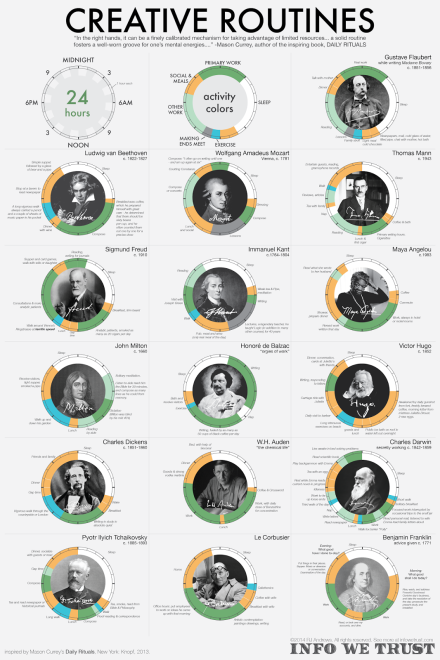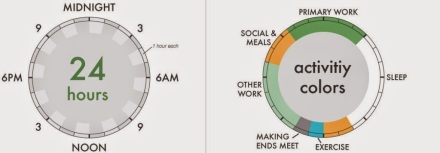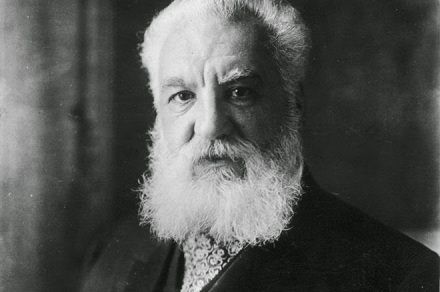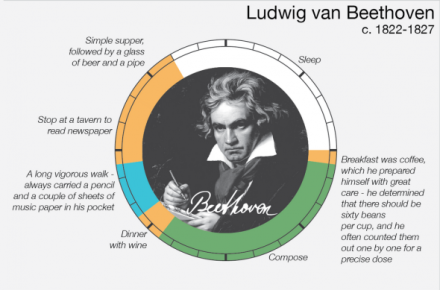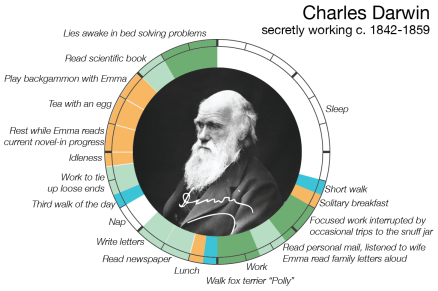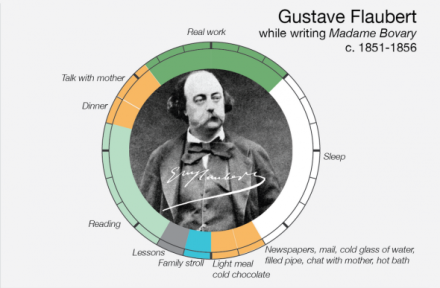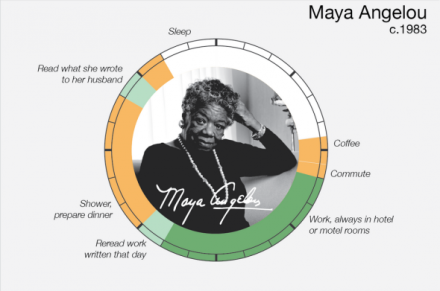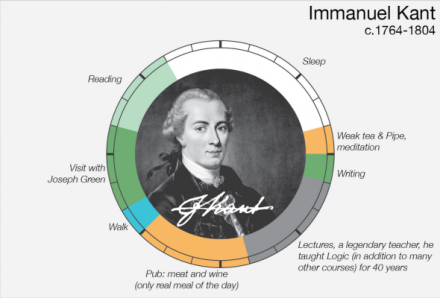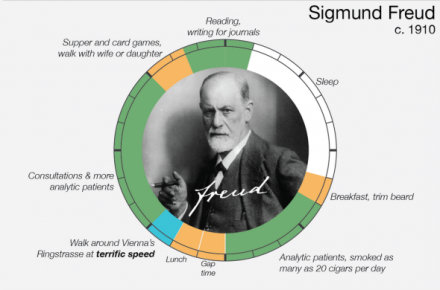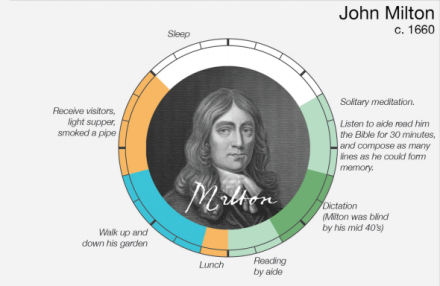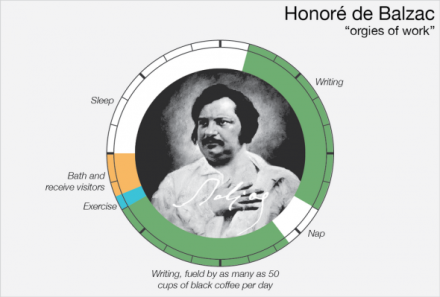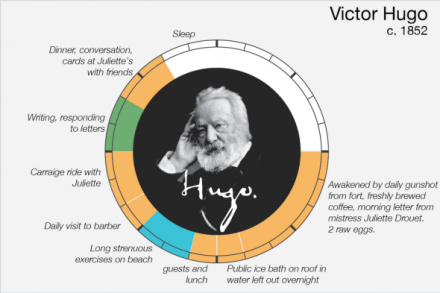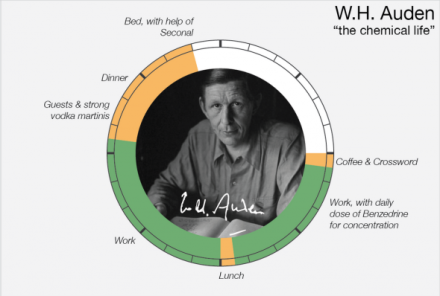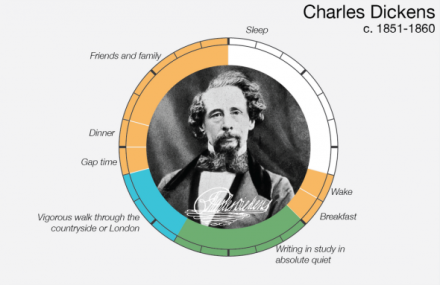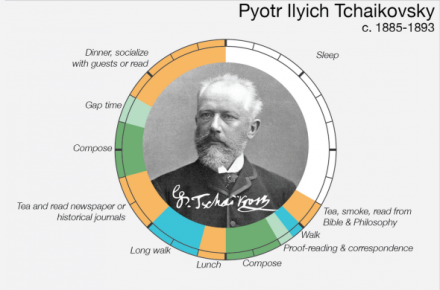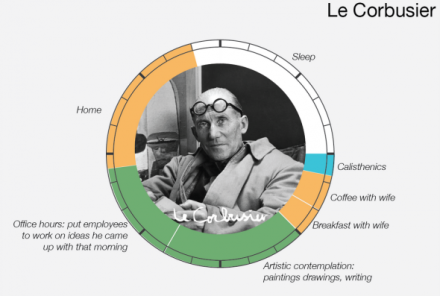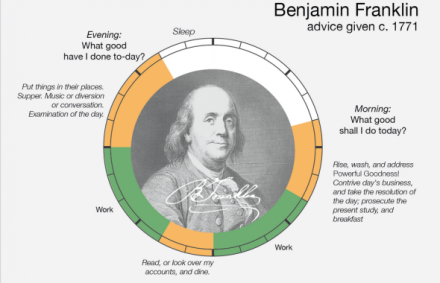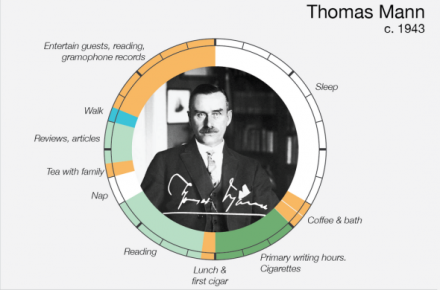Psychoactive plants and hallucinogens have given us the opportunity to see life through different perspectives for thousands of years.
Michael Forrester, Prevent Disease | Psychoactive plants and hallucinogens have given us the opportunity to see life through different perspectives for thousands of years. Many of these plants, which can only be defined as gifts from nature, have unfortunately been declared illegal in many parts of the world due to the ignorance and intolerance of many governments. As the shift in consciousness is accelerating across the planet, more people are accepting the true power of psychedelics with unprecedented potential to treat cancers, addictions, psychological traumas, but most of all, to reorganize the brain and shift thought patterns. It is now imperative for human consciousness that we free psychedelics from scrutiny and demonization, so that we may all use these plants responsibly to facilitate a greater awareness of non-secular concepts that are changing our world.
Author’s caution: I preface this article with a few words of caution. Specifically, through my shamanistic practices around the world, I have experienced the effects of all of the psychedelics mentioned below. Each has its own use and effectively complements specific practices in shaman culture. They are not to be abused in any setting as many can lead to a temporary lack of awareness of body and reality itself. This effectively places the subject in harms way, especially without a support party present. Please use any psychedelic plant responsibly, never if you are under 19 years of age, and only under the supervision of those who have been trained or have experienced the benefits first-hand through education and guidance. Your support party should always be sober, of clear mind and somebody you trust.
Note:
– Do not ingest psychedelics with alcohol
– Do not ingest psychedelics without supervision of responsible adults
– Do not combine psychedelics without expert supervision
– Do not use psychedelics as recreational party drugs
– Do not use psychedelics if you are prone to drug-seeking behavior
– Do not use psychedelics as a form of escaping from reality
– Do not use around dangerous environments
– Do not use if you are pregnant or breast-feeding
– Do not use if ignoring responsibilities in life to chase a high
– Do not use if symptoms aggravate a present mental illness
– DO ingest the raw plant whenever possible rather than smoking
Most of the psychedelic scare stories ever published were generated by people pursuing their own political or financial agendas, or by people with fundamentalist morals who were afraid of losing their power. In the last century. more than 99% of all information intended to vilify psychedelics has been proven false.
The shift in consciousness that has taken over the planet will not enlighten every human being. Some are not meant to experience the shift and will pass on (sometimes when you least expect it). Others are already on board. For those in between (and even for those on board), psychedelics offer a unique window of opportunity “during the high” which is otherwise absent without it. There are so many wonderful elements of consciousness including specific gateways which psychedelics enter, that ego simply has no chance of competing out. Ego tries, but it rarely if ever succeeds. They open a portal of beauty and creativity so large, that you can step into it and enjoy it in a way that is rarely available to the humanity from any other substance on Earth. Only very deep meditative states can match what psychedelics offer, and each state is very different.
Many researchers have been interested in the idea that psychedelics facilitate communication across the brain and, more specifically, how the default-mode network in the brain, arguably science’s best biological correlate of the self, normally works to constrain this.
Two studies have found absolutely no link between psychedelic use and a wide suite of mental health conditions, including schizophrenia, psychosis, depression, anxiety disorders and suicide attempts. For example, people who have tried LSD or psilocybin have lower lifetime rates of suicidal thoughts and attempts.
“Psychedelics” are substances with the ability to expand human awareness beyond our normal modes of perception. Some may be the most amazing substances known to humanity, so potent that just 1/10,000th of a gram can send one on a journey beyond time and space, beyond life and death. Here the psychedelic voyager can unlock and experience the collective evolutionary consciousness of billions of years past and an infinite future.
They allow the user to transcend the body, the personality, and view of the mind from undreamed-of perspectives, experiencing supersensory and extrasensory perception, choose from an infinite variety of “realities,” which can permanently change our experience of life.
Worship involving psychedelic plants and their use in spiritual pursuits can be traced to the beginnings of recorded history. The major role these plants played in the formation of early religions has been documented by several historians.
“I think of going to the grave without having a psychedelic experience like going to the grave without ever having sex. It means that you never figured out what it is all about. The mystery is in the body and the way the body works itself into nature.”
— Terence McKenna
Each person’s mind and capacity for handling psychedelics is different.
Psychedelics are not for everybody. Although most psychedelic trips are experienced as beneficial, some people have had experiences that left them disturbed afterwards. The main reason for these negative experiences is lack of preparation, rather than anything inherent in the person or in the substance.
5 Powerful Psychedelics
Out of the following psychedelics, I have found Salvia and Ayahuasca to be the most powerful out of body experiences (that can be recalled), and Cannabis to be the most profound to alter daily thinking patterns when taken consistently and with the aid of meditation.
Perhaps one of the most medicinal but least powerful of all hallucinogens,Cannabis Sativa whose active ingredient is THC (tetrahydrocannabinol) has also been referred to as marijuana, dope, pot, bush, weed, hash, ganja, joint, among others. It is by far one of the safest psychedelics on Earth, and perhaps one of the few that can be utilized without supervision.
It can treat a number of diseases and disorders, including cancer, fibromyalgia, epilepsy and multiple sclerosis better than pharmaceuticals. Marijuana has also been found to reduce blood pressure, treat glaucoma, alleviate pain and even inhibit HIV. It is an antioxidant, anti-inflammatory and neuroprotective.
When cannabis is used over a period of time, it allows us to witness our many subtle motives which, under normal consciousness, are usually not noticeable. Duality within human consciousness becomes clear as does the ego and alter ego. Cannabis highs last typically from 1-4 hours.
There are two states of awareness which relate to these sensory effects. The basic one can be called pure awareness. In this state the person is completely and vividly aware of his experience, but there are no processes of thinking, manipulating, or interpreting going on. The sensations fill the person’s attention, which is passive but absorbed in what is occurring, which is usually experienced as intense and immediate. Pure awareness is experiencing without associations to what is there.
The other state of awareness is one which can be termed conscious awareness, in which the sensory experience is connected to meanings, plans, functions, decisions, and possible actions. This is our normal way of perceiving and how we usually go about our daily lives. We do not sense the world directly, but with the incorporation of our memories, meanings, and uses. In the state of pure awareness objects are experienced as sensory qualities, without the intrusion of interpretation. There are examples of this in normal life. The sensation of sexual orgasm may be (and hopefully is) experienced with pure awareness. Natural beauty, such as flowers, mountains, oceans, and sunsets, is sometimes experienced from a point of awareness without adding conscious thinking.
With this expansiveness which occurs after ingesting cannabis, users may begin to notice infinite possibilities to raise the quality of his/her life that would otherwise have remained hidden from normal, defensive consciousness. And feelings of health and happiness naturally lead to hope, which of itself can be curative.
For a person using marijuana for the first few times, sensory changes occur sequentially, rather than all at once. First they may notice increased brightness and clarity of colors, then sounds, then visual structures, such as paintings or designs. (Two dimensional photographs and motion pictures may be seen in three dimensions on the high, a perception which can be transferred to the normal state under certain conditions.) Then proprioceptive sensations may present themselves. Any order of the effects may occur during one high state or several. Often effects will develop to particular levels and then stabilize without further elaboration.
Cannabis can act as the loosening agent, so that whatever has been banned from consciousness may come cascading forth. To uncover our deceptions without our usual rationalizations can be unpleasant, an experience that has turned many psychologically fragile individuals away from marijuana despite its therapeutic catharsis.
Intensity of sensory experience seems related to the total proportion or amount of attention which is involved in the process. If attention is used in conscious or unconscious processes in making decisions, remembering, evaluating, etc., then this much is removed from the awareness of the sense experience. Thus it may be that one of the causes of sensory enhancement under cannabis is that attention energy moves from consciousness processes into awareness processes, which amplifies the experience.
Cannabis’ contribution to the developing spirit is cumulative. As bodily tensions are reduced mental fears dissolve, clearing the way to greater insight. People who try cannabis and reject it do so usually because they feel uncomfortable and confused in altered, fuller consciousness. Instead of life being safely framed by the rigidity of the societal dogma, the wold becomes unfamiliarly bigger, brighter, fuller, yet less manageable, more unpredictable and full of mystery. A mind that has been bound and accustomed to a low charge or a selling without light very often finds the expansiveness of reality too highly energized. The light can be blinding and disorienting. Over time, and with regular intake, when these higher states of seeing are no longer the focal point of attention, a restructuring of values may emerge.
**** SALVIA ****
Given the right dose, individual, set and setting, Salvia Divinorumproduces a unique state of ‘divine inebriation’ which has been traditionally used by Mazatec healers. It is the most powerful natural psychedelic legally available and capable of profound out-of-body experiences just by simply chewing its leaves. Users should observe all cautions with Salvia including appropriate sitters, safe environments and education before ingestion. Its effects can be traumatic for those who are unprepared.
Salvia divinorum is both similar to, and different from, other drugs that affect the brain and behavior. In many ways Salvia divinorum is a unique ‘magical’ herb. Salvia (and the salvinorin it contains) is very difficult to categorize pharmacologically. It does not fit well into any existing pharmacological class. A very small and almost insignificant amount of salvinorin can immediately propel the user into an out of body experience. Once the appropriate concentration of salvinorin is met, it takes only seconds before the user is unable to verbally respond to a sitter, and thus important that all dangerous objects and physical obstacles be removed in the user’s space. Most users who are exposed to large doses have only slight recall on what transpired in reality for up to 15 minutes after the dose.
Most reports describe the use of this plant by Mazatec shamans, and although it is just barely touched upon in the anthropological literature, it is also reportedly used by their immediately contiguous neighbors, the Cuicatecs and Chinatecs. Given that the plant is quite easily propagated, it is surprising that such an extraordinary herb is only known of in such a geographically limited area. It seems quite probable that it would have found its way to other neighboring tribes through sharing and trade.
With a moderately strong dose of Salvia, consciousness remains and some thought processes are still lucid, but one becomes completely involved in inner experience and loses all contact with consensual reality. Sometimes voices may be heard. With eyes open contact with consensual reality will not be entirely lost, but when you close your eyes you may forget about consensus reality and enter completely into a dreamlike scene. Shamanistic journeying to other lands, foreign or imaginary; encounters with beings, entities, spirits; or travels to other ages may occur. You may even live the life of another person. At this level you have entered the shaman’s world.
Individuality may be lost; one experiences merging with God/dess, mind, universal consciousness, or bizarre fusions with other objects real or imagined, e.g. merging with a wall may be experienced. At this level it is impossible to function in consensual reality, but unfortunately some people do not remain still but move around in this befuddled state. For this reason a sitter is essential to ensure the safety of someone voyaging to the inner levels. To the person experiencing this, the phenomenon may be terrifying or exceedingly pleasant; but to an outside observer the individual may appear confused or disoriented.
The dose can be well moderated by using an extract and users can enjoy a variety of intensities by simple sublingual application.
What is especially important during a Salvia trip is to not talk to the user unless it is requested and preferably shutdown all electronic devices including television, phone and music and they can create disruptions during the experience. Salvia is not a party drug and requires a responsible support person or group by the user’s side at all times.
What is interesting is that a surprisingly large proportion of salvia users report a type of afterglow which persists. It typically involves mood elevation, an overall sense of well being, and often a fresh outlook on life which can linger for several days (or longer) after the experience. This phenomenon seems to be quite common. For many mood elevation can last between one and three days.
**** PSILOCYBIN (MAGIC MUSHROOMS) ****
Ingesting these types of mushrooms has a strong hallucinogenic effect that begins to affect the user within 20-30 minutes. Early effects of the active ingredients in mushrooms, psilocybin, psilocin, and baeocystin, are broken down into psilocin once they have been taken. The initial feelings are described as mild anxiety or anticipatory sensations. Entire physical body sensation of energy or mild electricity running through the body is common.
Hallucinogenic mushrooms have been part of human culture as far back as the earliest recorded history. Ancient paintings of mushroom-ed humanoids have been found in caves in the Saharan desert. Central and Southern America cultures built temples to mushroom gods and carved “mushroom stones”. These stone carvings in the shape of mushrooms, or in which figures are depicted under the cap of a mushroom, have been dated to as early as 1000-500 B.C. The purpose of the sculptures is not certain, but these stones may have been religious objects.
The effects leave users in a high state of euphoria. They are mood enhancing, general happiness, insightful ideas and sense of creative energy.
In mathematical terms, normal brains have a well-ordered correlation state. There’s not much cross-linking between networks. That changes after the psilocybin dose. Suddenly the networks are cross-linking like crazy, but not in random ways. New types of order emerge.
“We can speculate on the implications of such an organization,” wrote researchers, who were led by neurobiologist Paul Expert of King’s College London. “One possible by-product of this greater communication across the whole brain is the phenomenon of synaesthesia” common during psychedelic experiences, of sensory mix-up: tasting colors, feeling sounds, seeing smells, and so on.
While the psychedelic state has been previously compared with dreaming, the opposite effect has been observed in the brain network from which we get our sense of “self” (called the default-mode network or ego-system). Put simply, while activity became “louder” in the emotion system, it became more disjointed and so “quieter” in the ego system.The first study, published in Proceedings of the National Academy of Sciences in 2012, revealed decreases in brain activity after injection of psilocybin that were localized to the default-mode network.
This finding was exciting because it synched with the idea that psychedelics cause temporary “ego dissolution”, in other words diminishing one’s sense of having a firm and enduring personality. New research adds to our understanding about how this happens.
A study that examined brain scans of people under the influence of psilocybin found that it reduces activity in certain areas of the brain. That reduction of activity leads to the drug’s effect on cognition and memory. Psychedelics, and psilocybin in particular, might actually be eliminating what could be called the extra “noise” in the brain.
Psychiatry professor Matthew Johnson, who works at Johns Hopkins University School of Medicine, presented the preliminary results of a pilot feasibility study looking at the ability of psilocybin to treat smoking addiction at the 2013 Psychedelic Science conference in Oakland, Calif. For the study, five cigarette-addicted participants underwent placebo-controlled psilocybin treatment with a psychiatrist. All five completely quit smoking after their first psilocybin session. At all followup visits, which occurred up to one year later for the first four participants, it was biologically confirmed that the participants had abstained from cigarettes.
It should be noted that like all ‘major’ hallucinogens, psilocybin can precipitate psychotic episodes and uncover or aggravate previous mental illness. If you’re stressed out or depressed, don’t take mushrooms; if you have schizophrenia, DO NOT take mushrooms.
For exhaustingly exhaustive and thoroughly technical descriptions of most Psilocybes, the reader is referred to Psilocybin Mushrooms of the World by Paul Stamets, Singer & Smith: Mycologia 58, 263-303 and H0iland: Norw J Botany 25(2), 111-122.
**** AYAHUASCA ****
Ayahuasca is a brew prepared with the Banisteriopsis caapi vine, originally used for spiritual and healing purposes in the Peruvian Amazon rainforest. Peru’s government claimed that consumption of the “teacher” or “wisdom plant “constitutes the gateway to the spiritual world and its secrets, which is why traditional Amazon medicine has been structured around the ayahuasca ritual”
Though scientific evidence of the clinical benefits of ayahuasca is limited, advocates say it has become increasingly popular as a tool to treat post-traumatic stress disorder (PTSD), depression, and addictions.
“Most people seek ayahuasca with good intentions – they are not thrill-seeking but are curious, serious – or have specific issues such as depression,” says botanist Prof Dennis McKenna, from the University of Minnesota.
The vine is usually mixed with leaves containing the psychedelic compound DMT(diemethyltryptamine). It causes hallucinogenic experiences, and is made up of a chemical compound that already occurs within the human body endogenously (as well as in a number of plants). This means our brains are naturally set up to process the compound because it has receptors that exist specifically to do so.
Some research based on near-death experiences points to the fact that the brain releases DMT during death. Some researchers have also conjectured that DMT is released during other intense experiences, including orgasm.
Gabor Mate, a medical doctor from Vancouver who is a prominent ayahuasca researcher, contends that therapy assisted by psychedelics, and ayahuasca in particular, can untangle complex, unconscious psychological stresses. He claims these stresses underlie and contribute to all chronic medical conditions, from cancer and addiction to depression and multiple sclerosis.
The results of the first North American observational study on the safety and long-term effectiveness of ayahuasca treatment for addiction and dependence were published in June 2013 in the journal Current Drug Abuse Reviews. All of the participants in the study reported positive and lasting changes, and the study found statistically significant improvements “for scales assessing hopefulness, empowerment, mindfulness, and quality of life meaning and outlook subscales. Self-reported alcohol, tobacco and cocaine use declined, although cannabis and opiate use did not.” The reported reductions in problematic cocaine use were also statistically significant.
It is a ritualistic learning process that is becoming increasingly popular across the globe, with people exploring their personal development through the introspective nature of the hallucinogenic experience, according to the International Center for Ethnobotanical Education, Research & Service (ICEERS).
**** LSD ****
LSD (lysergic acid diethylamide) is a naturally occurring alkaloid extracted from the fungus Ergot which can grow on rye and other grains. It is among the most potent, mood changing chemicals. It is odorless, colorless, and has a slightly bitter taste. From a chemical perspective, LSD in its pure, unadulterated form, is relatively safe, and although it varies from person to person, it has no serious physiological effects.“Man-made” LSD or “street acid” on the other hand is manufactured with combinations of poisons (usually strychnine, a rat killer) and should beavoided at all costs. Unlike cannabis, LSD highs can last much longer–usually over six hours and in some cases more than twelve hours on different “street acids” which can be problematic for those experiencing “bad trips.”
Note that the extraction of LSD from Ergot is complex and requires skills that are well-versed in chemistry (do not initiate your own experiments).
LSD is known to cause changes in consciousness, including “ego-dissolution,” or a loss of the sense of self. Despite a detailed knowledge of the action of LSD at specific serotonin receptors, it has not been understood how these pharmacological effects can translate into such a profound effect on consciousness.
It is capable of producing a full range of low and high level hallucinatory states in a fashion that is significantly less consistent and reproducible than that of many other commonly used psychedelics.
Although LSD is technically capable of producing hallucinatory states in a fashion that is on par with other powerful psychelics, including vividness and intensity, these effects are extremely rare and inconsistent in comparison. This lack of consistently induced hallucinatory breakthroughs means that for most, LSD is simply not as deep of an experience as certain other psychedelics. On the rare occasion that they are induced however, they can be comprehensively described in terms of their variations as lucid in believability, interactive in style, new experiences in content, autonomous in controllability and geometry-based in appearance.
The Journal of Nervous and Mental Disease published results from the first study of LSD’s therapeutic potential in humans to appear in more than four decades. The controlled, double-blind study, which was conducted in Switzerland under the direction of Swiss psychiatrist Peter Gasser, measured the impact of LSD-assisted psychotherapy on 12 people with life-threatening diseases (mainly terminal cancer). “The study was a success in the sense that we did not have any noteworthy adverse effects,” Gasser says. “All participants reported a personal benefit from the treatment, and the effects were stable over time.”
LSD reduces connectivity within brain networks, or the extent to which nerve cells or neurons within a network fire in synchrony. LSD also seems to reduce the extent to which separate brain networks remain distinct in their patterns or synchronization of firing. Overall, LSD interferes with the patterns of activation in the different brain networks that underlie human thought and behavior.
Dr. Robin Carhart-Harris and his colleagues at Imperial College London did sequential brain scans of 20 healthy volunteers over 6 hours, using functional magnetic resonance imaging (fMRI), which maps brain activity by detecting changes in blood flow, and magnetoencephalography (MEG), a technique that images brain function by recording magnetic fields produced by electrical currents occurring in the brain.
Dr. Carhart-Harris suggests that “with better assessment tools available today than in the 1950’s and 1960’s, it may be possible to evaluate potential uses of LSD as a treatment for addiction and other disorders, such as treatment-resistant depression “which we are currently investigating with a similar drug to LSD”. LSD also may provide a useful human model of psychosis, as it leads to changes in brain network behavior that shows overlap with the early phase of psychosis.
“I see the true importance of LSD in the possibility of providing material aid to meditation aimed at the mystical experience of a deeper, comprehensive reality. Such a use accords entirely with the essence and working character of LSD as a sacred drug.” Dr Albert Hofmann, the founder of LSD.
“… LSD is best understood as a powerful unspecific amplifier, or catalyst, of mental processes, which facilitates the emergence of unconscious material from different levels of the human psyche.”‘ Dr Stan Grof, Esalen Institute.Although I don’t recommend trying LSD without a trained professional guiding you through the process, if you are absolutely determined to ignore this advice, the following video gives sensible guidelines on how to prepare for and manage an LSD trip.
